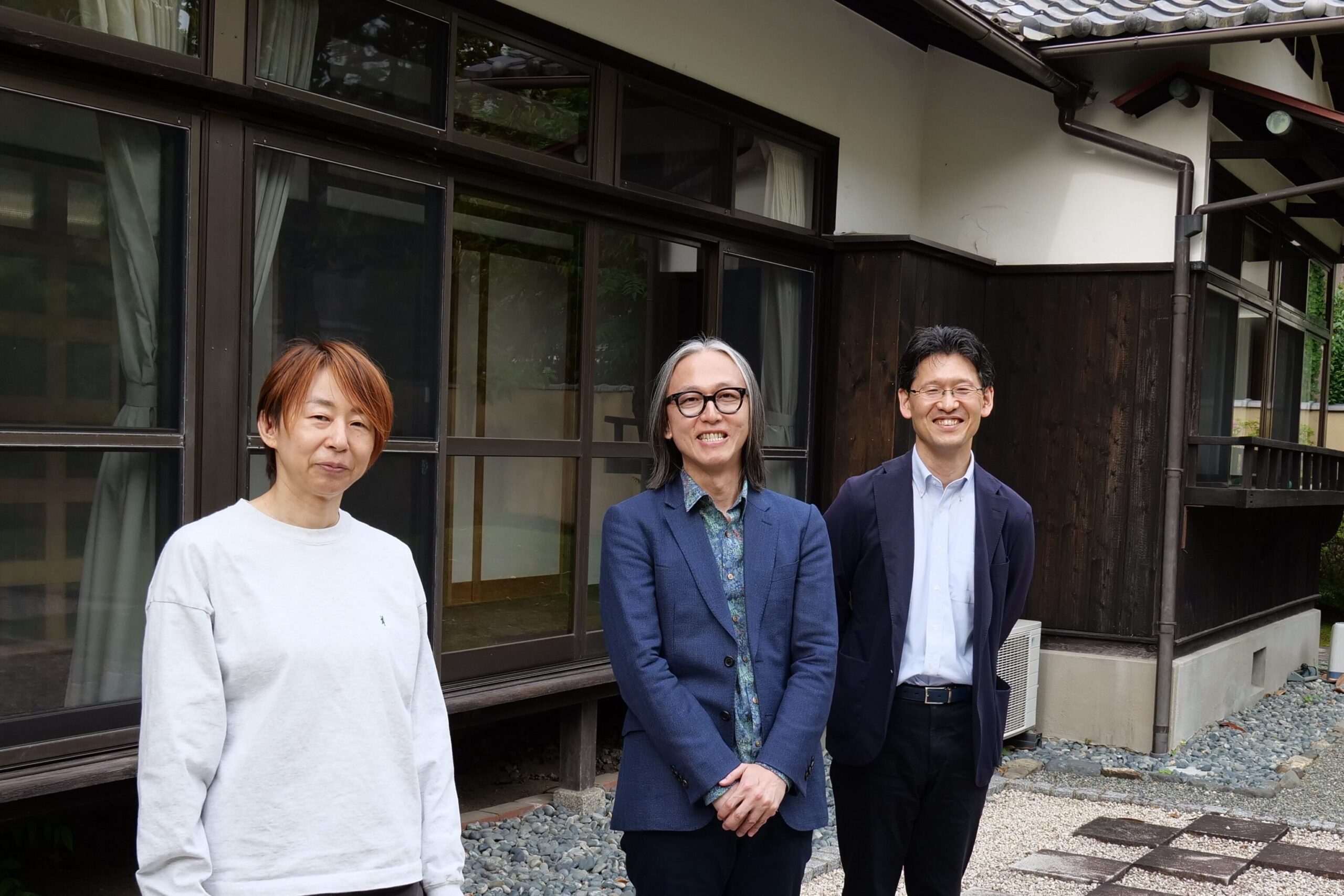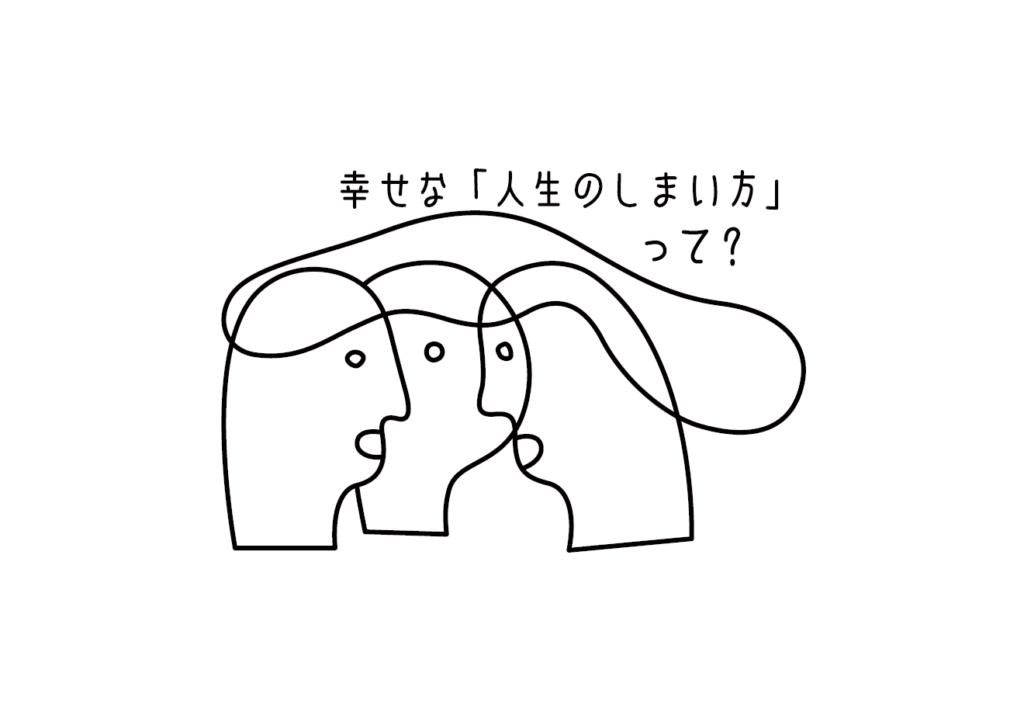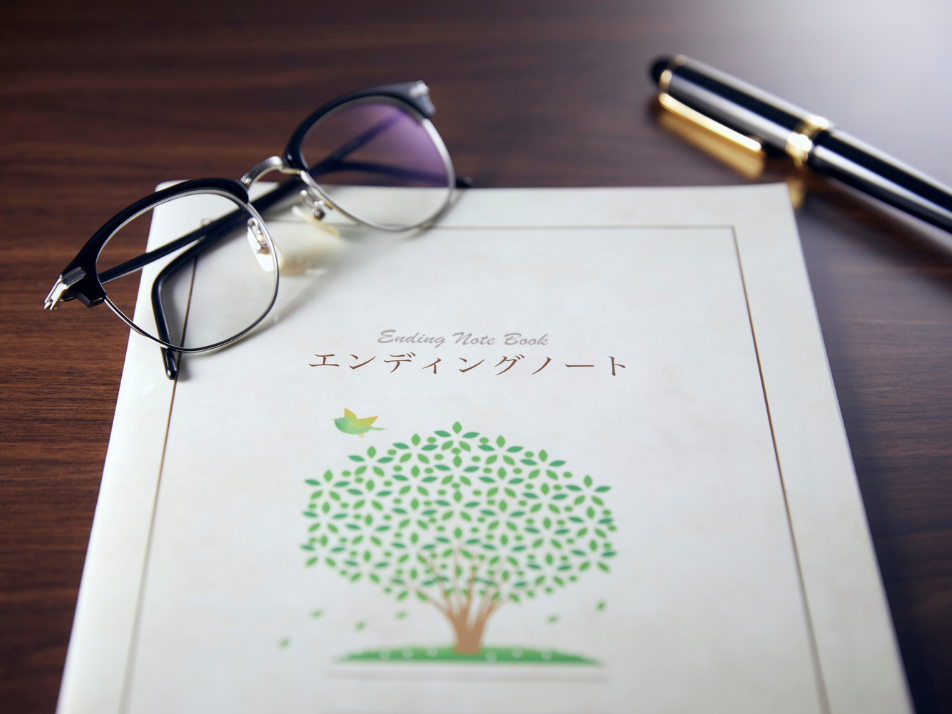"Support for sustainable decision-making and arrangements that preserve dignity for everyone during and after lifeThe catchphrase for the "How to End Your Life Happy?" project is, "What is the best way to end your life?" We invited copywriter Tomo Harada, who created the catchphrase, to talk with the two project representatives about how the catchphrase came about and their thoughts behind it.

--Today, we have with us the project representatives, Professor Kodama and Mr. Sawamura, as well as our guest copywriter, Mr. Harada. First, please introduce yourself, Mr. Harada.
(Harada) My name is Tomoki Harada, a creative director and copywriter. I have been creating catchy slogans and TV commercials at an advertising agency for many years, and now work freelance. During my university years, I studied ethics out of an interest in "what does it mean for people to understand each other?" While working in corporate advertising and public relations, I thought about the differences in values between companies and consumers, and between companies and society, which rekindled my interest in ethics. I then took the "Space Ethics Education Program" held at Kyoto University in 2022. I got to know Professor Kodama there, and through that connection, I was asked to help create the words for this project.

- When Professor Kodama approached you about this project, you said that you were interested in the content of the project. What was it about it that interested you?
(Harada) I am currently the creative director of Nishi Honganji Temple in Kyoto. In my work at the temple, I often think about how humans think about themselves when faced with death, and one reason why the theme of this project coincided with my daily work is that it was a theme that coincided with my daily work. I also think that death and facing death are very difficult themes. When I heard Professor Kodama say that he wanted to communicate this difficult theme to society in the easiest way possible, and that he wanted many people to talk about and think about it, I thought it was an important project.
-It was Professor Kodama who suggested creating a catchphrase, right?
(Kodama) Yes. I had previously created a logo and nickname for another project, and I thought that this kind of activity was important when considering the project's identity. For the SMBC Kyoto University Studio project, I also wanted to come up with a name that succinctly represented the project as quickly as possible, so I contacted Harada.
(Sawamura) This was my first experience creating a catchphrase for a project, and it taught me that there are other approaches. I have been following the issues of getting married and elderly people living alone for a long time, but there was so much I wanted to communicate to society that I struggled to communicate it effectively. Harada listened to what we had to say and summarized the main points in no time, which made me realize how amazing copywriters are. It felt like I was able to grasp the things I usually think about and worry about from a different angle.

-What do you think is the key point about the catchphrase?
(Harada) I think there are about three points.
As a copywriter, when I think of words to use, I ask myself, "What words would most people in the world use to talk about this?" The theme of this project is confronting "death." I think there is a unique sense of resistance to the word "death." If it's a word that's difficult to say, it's impossible to talk about it. So I wondered what way to say it that would make it easier to talk about, and I arrived at the word "how to put it away." Rephrasing the word "death" in this way was the first key point.
The second issue was how to communicate the phrase "Sustainable for everyone to maintain dignity during and after life" that was in the project title. It's a difficult word, but I thought it simply meant "good." I think many people have the image that at the end of life, there is nothing good and everything ends. I thought that adding the word "happy" here would create a contrast and become a catchy copy.
The third point, which is also a key point of the project, is that we do not decide on the correct answer, but end the project in the form of a question: "What is a happy way to end your life?" Instead of "How to end your life happily," we ask, "What is a happy way to end your life?" We hope that those involved in this project, including those reading the articles and participating in the events, will think about how they feel about it. That is the feeling we put into the message.
(Sawamura) All of the words used in the catchphrase are commonplace, but I think they were good choices. When I heard the word "rich" used in relation to this theme, I thought it didn't quite fit. I think it's because when you use "rich," the opposite comes up: "poor." I felt uncomfortable with someone other than that person describing someone's life or the way they died as rich or poor. But "happiness" is subjective, and it's not something that anyone can decide, so I think it made sense to me.
(Harada) Perhaps the important thing was that it wasn't something that someone else had to decide. Perhaps the key was asking, "Isn't your happiness in your hands?"
(Kodama) The goal of this project is to create a movement to think together about how to end one's life. The question was posed with this in mind, and I think it turned out to be a great catchphrase.
The conversation between the three of them that followed was streamed on YouTube. If you're interested, please take a look here.
The power of words


